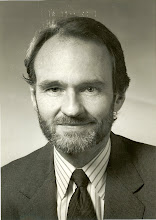Interest rates, continued.
The Term Funds market is the largest slush fund in the world. This is where US banks come to take care of business. Some banks are flush, some banks are short; they work things out. All banks have reserve requirements to meet and other short-term needs. Here is where they come to fund these liabilities. Maturities are from o/n to two weeks, some even longer. Banks lend/borrow to/from one another, without collateral. This is the heart of bank liquidity. Early Q4, 2008 this market seized up; it locked in place. As a result we were only weeks away from a free fall, one which would have made the Great Depression look like a party. Only thanks to the G-20's quick maneuvering were we spared.
In Q4, trust vanished. No single world institution trusted any other (notwithstanding decades worth of relationship). No one knew just how poisoned collateralized mortgage paper really was, or, who owned how much of it. The banks lied to each other, and, to regulators. Thus, even though funds extended in the term funds market are of a very short maturity, no one was sure if they’d get anything back.
We all remember that time. To most of us, there was an uneasy feeling, but of exactly what we weren’t sure. Major world financial institutions on the other hand, being players, feared they might not see another sunrise. They knew the implications. In what is called a "flight to quality" they sought shelter in short term US obligations - Treasury bills. These offered the least specific credit risk (visited earlier) of anywhere else in the world and no inflation risk. Recalling our anchor, prices erupted, and yields plummeted, so that the 90 Tbill yielded a tick or two away from 0%!
Next, the Fed came to life, pumping money into the system. To do this they target Fed Funds, the O/N rate in the term funds market, as a gauge of tension. The rate had been 2% end of Q3; the Fed cut it to 0.25%, effectively 0%. This means one thing - all the money you guys need is there for the taking. But, it did not help. It was, like the old saying goes - pushing on a string.
Finally, G-20 central banks guaranteed inter-bank transactions. Slowly, normalcy returned to the world’s liquidity situation. Since that time, the Fed has expanded its balance sheet, buying practically anything under the sun - they can buy a herd of longhorn steers if they want The Fed is using its balance sheet to support the housing market and economy generally (a process effective over the near term but fraught with danger).
This brings us conveniently to the Yield Curve - the pattern of US interest rates from O/N to 30 years. This is a very handy tool. We should all keep an eye on it. In Jan/08, FF’s were 3.5%, 90 day LIBOR (another short-term measure) was 3.31%, the 2 yr Treasury 2.19%, the 10yr 3.56% and the 30 yr 4.27%. At this writing, FF’s at 0.14%, 90 day LIBOR is 0.25%, the 2 yr, 0.85%, the 10 yr 3.55% and the 30 yr, 4.48%. Whoa! Quite a story this gives up. Observe how short rates out to 2 yrs are in the cellar compared to the period just ahead of sub-prime concerns, yet observe how the 10 and 30 yr yields are near the same levels. Given what we learned earlier what does this tell us? Easy. Everyone in the world wants to own short paper as is obvious by the exceptionally high prices, thus negligible yields. We know why. No one is investing, no one is hiring. Most are content to sit on it. Keep it short and safe. What about the long end, 363 basis points (a b.p. =’s one hundredth of 1%) over the 2 yr vs only 208 in Jan/08? That tells us that because short term rates are so cheap, the world’s markets are beginning to price in inflation, that is, an expansion of that component in the summary yield. This is the message of a steeper yield curve. This is not reality necessarily but consensus anticipation of reality, right now. The 30 year is cheaper (lower price, higher yield) than it was almost two years ago, but the economy is weaker. This should be the other way around should it not? If this situation continues, it will be a read flag to the Fed; for the moment however, the recovery is too fragile for the Fed to begin to reverse its past actions.
In the next and final sketch of this series we’ll look at more practical considerations, a tad closer to home.
Robert Craven
Subscribe to:
Post Comments (Atom)

No comments:
Post a Comment